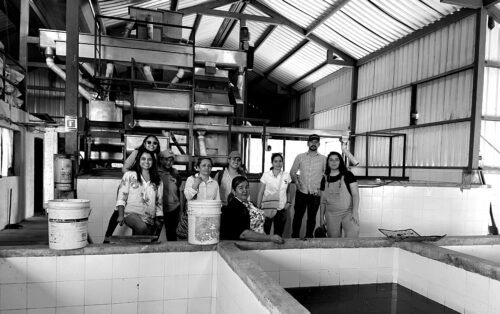
In 2007, the term “impact investing” was coined at the Rockefeller Foundation’s Bellagio Center , referring to investments made with the intention of generating both financial return and social and/or environmental impact. This after a long history of that organization in supporting innovations that seek to catalyze private sector investment for social and environmental good. Thus, in recent years, impact investing has been expanding as a promising tool for both investors and philanthropists, who for many years thought of themselves as actors from different scenarios.
In April 2022, a report of GIIN (Global Impact Investment Network) estimated that the current size of the global impact investment market is $1.164 billion dollars, in which the organization admitted that for the first time it had exceeded one million million in this area. Investments come mainly from the United States and Canada (50% of investing organizations) and from Western and Southern Europe (31% of organizations), while in Latin America the number is one of the lowest (3% of investing organizations).
In addition to the above, the study considers that more than 50% of active impact investor organizations made their first investment within the last 13 years, a situation that suggests the development and growth of the sector in recent times.
Impact investments are investments made with the intention of generating a positive and measurable social and/or environmental impact along with a financial return . Impact investing can be done in both emerging and developed economies, targeting returns that can range from below-market to market-rate returns, depending on each investor’s strategic objectives.
Impact Investing Concepts
As explored, the growing impact investing market makes capital available to address and help overcome the most pressing challenges in the world, and in particular in Latin America in sectors such as agriculture, renewable energy, education, conservation, financial inclusion, sustainable tourism, health, housing and rural development.
Here are some important concepts regarding impact investing:
impact investor
Organizations, funds, fund managers, foundations, family businesses, government, pension funds, cooperatives, insurance companies making investments with the intention of generating a measurable social and/or environmental impact together with a financial return.
Entrepreneurship with social/environmental impact
An organization whose mission is its primary drive (for-profit, non-profit, or hybrid) and with a market-based strategy.
A new arena is also unfolding in which both for-profit and non-profit organizations can be value and impact driven while also being responsive to the marketplace. More and more nonprofits are generating revenue through the sale of products or services to become sustainable and less reliant on philanthropy, while for-profits are integrating social good into their business models.
investment elements
- intentionality
The investor must have the express purpose of generating a social or environmental impact.
- Impact Measurement
The expected impact must be measurable. Objectives must be determined and these must be able to be monitored and managed.
- financial return
The investment must generate a return. The range of return expectations can vary and fall on the spectrum from expecting a below market return to an average market return.
- Instruments
The investment vehicles and instruments can be structured as private or public debt or capital, assets or other innovative instruments, such as performance-based payment contracts and Social Impact Bonds.
- additionality
Today, not only is impact investing conceived as an investment that manages to be sustainable from a financial and social/environmental point of view, but the path is also being opened to take a further step towards regenerative investment.
This text was originally published in Ecosistema de Impacto in August 2019. Its authors were Luz Mila Lancheros and Gabriela Carrasco, and it was updated in February 2023 by the 2811 team.
We invite you to learn more about our economic regeneration projects here .
Related Posts
Regeneration: a path of change towards hope
Regeneration is the action that proposes to restore what the planet has lost, beyond just minimizing its damage.
Read moreFinances at the service of the planet and contributing to its regeneration
We want to explore how finance can be, instead of a confrontation against the planet, an alternative to contribute to [...]
Read moreImpact investing in Colombia: ecosystem under construction
After various conversations with relevant stakeholders, we mapped impact investing in Colombia.
Read more


